Can fruit trees help save our bees?
 Lee Burkhill: Award Winning Designer & BBC 1's Garden Rescue Presenters Official Blog
Lee Burkhill: Award Winning Designer & BBC 1's Garden Rescue Presenters Official Blog

If you're wondering how to can attract more bees to your garden then you may not have thought of introducing a fruit tree. At present, the UK is home to over 250 species of bee with the majority being solitary bee species. As well as increasing crop size and quality, bees play a pivotal role in the environment, pollinating plants that provide seeds, berries and fruits to many members of the animal world.
It takes more than water and sunshine to grow some of our favourite foods. Around 30% of everything we eat needs cross-pollination to grow and almost 90% of plants needing bees or other insects to increase their quality and yield.
Planting fruit trees in your garden not only attracts bees but also other pollinators and wildlife. A garden well-visited by bees will see its flowers bloom as bees spend their days hopping from one plant to another. We all know that we need bees but the pollinators are in peril. The use of insecticides is linked to a wide-scale decline in wild bees in the UK according to the NERC Centre for Ecology and Hydrology.
The number of managed honey bee colonies, in the UK, fell by 53% between 1985 and 2005. Over the past 50 years, there has been an overall decline in honey bees with contributing factors being disease, habitat loss, climate change and pesticides. It’s estimated that pollinators add roughly £600 million per year to the value of crops in the UK.
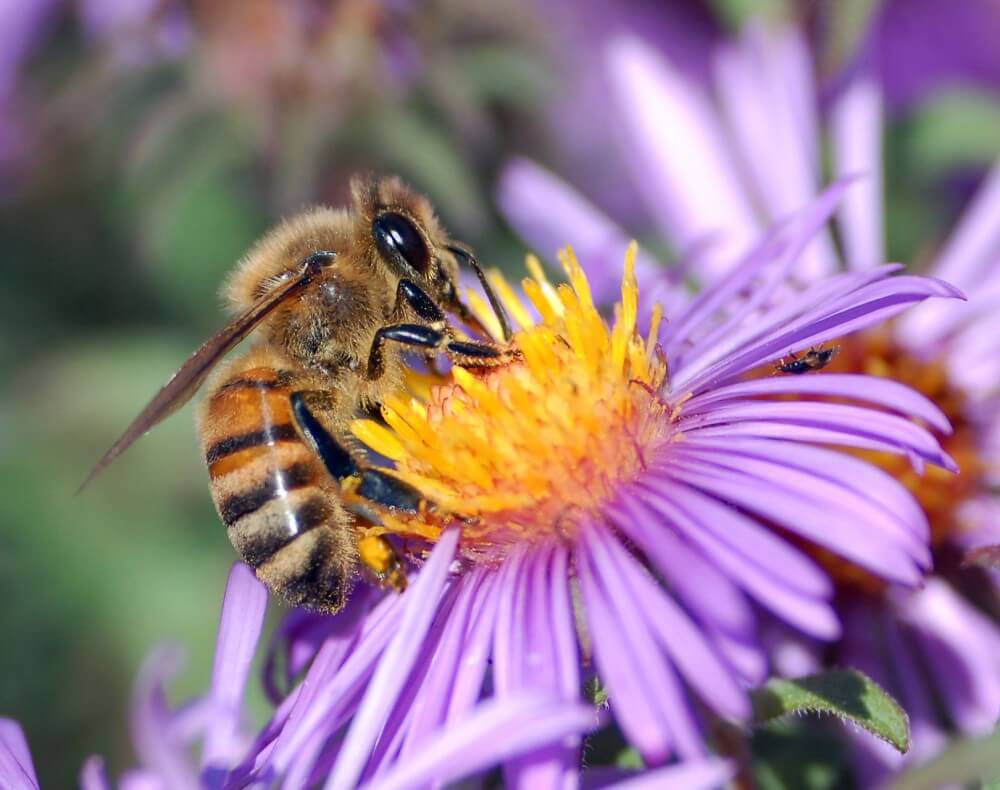
Did you know that you can take my course and learn how to become a Garden Ninja yourself? Click here for details
One of the most important factors in producing good quality crops is pollination. Many types of fruit trees and plants require pollination in order to produce delicious crops. Cross-pollination refers to the transfer of pollen between different varieties or species. A carrier is always needed for this process with the most common pollen carrier being the honeybee. Although birds and other insects can pollinate, the honeybee is crucial. A single honeybee may visit as many as 5,000 flowers in one day.
Therefore, understanding the habits and activities of a honeybee is beneficial in learning how to make the most out of your garden. These helpful insects help to increase yield and are an efficient carrier of pollen. Carefully planning what you will plant and where can help you get the most from bees.
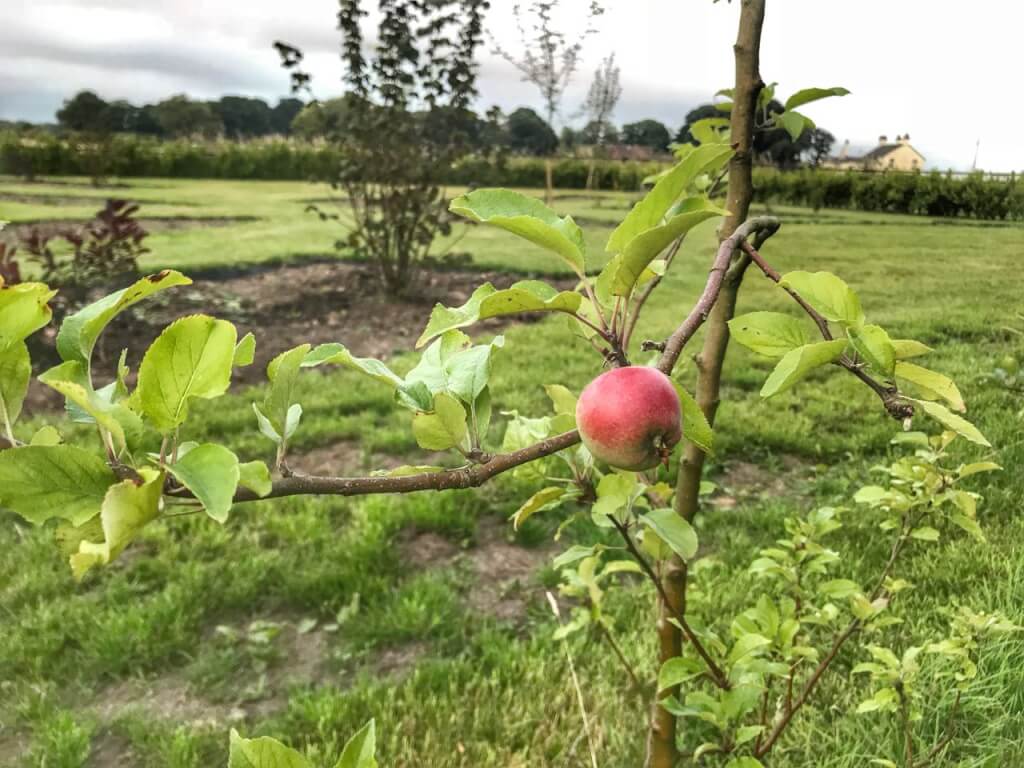
Many fruit trees require pollination between two or more fruit trees to set. Pollination takes place when the trees blossom. While some fruit trees can self-pollinate and bear fruit themselves, with the help of bees, other fruit trees are cross-pollinating. Fruit trees such as sweet cherry, pears, plums and apples are cross-pollinating so they need another tree for pollination.
Before deciding on which fruit trees to add to your garden, think about where it will go and the growing conditions. Make sure to not plant pollinating trees more than 50 feet apart. Think ahead to the fruit harvest and make sure any fallen fruit won’t cause any problem. Fruit not picked will eventually fall so keep it away from driveways, paths and decking.
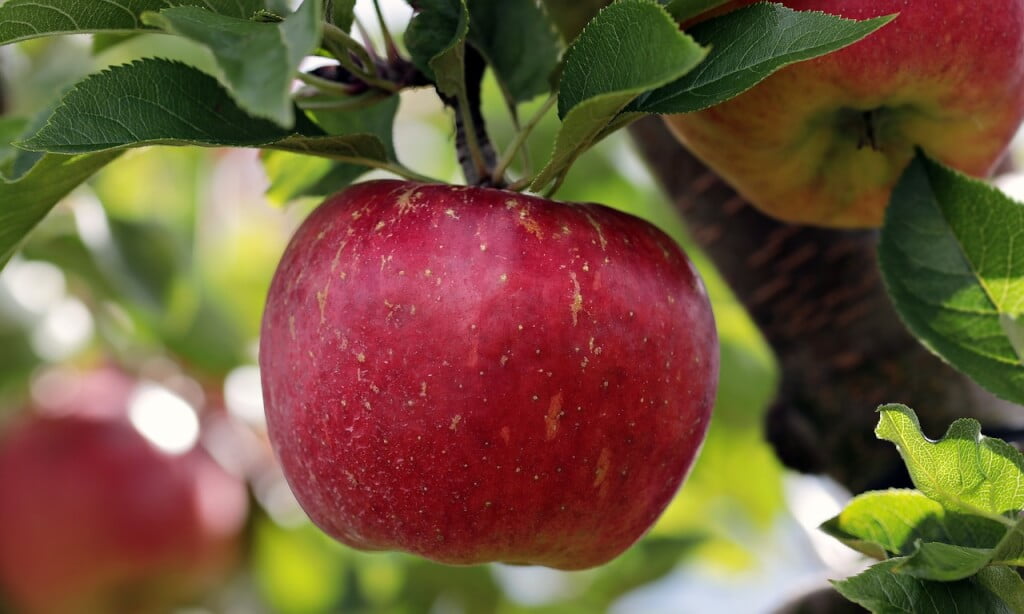
During the first two years of planting, water fruit trees once a week during hot weather. If the tree goes dry it can lead to a weak bud set or even cause the flowers to drop too early resulting in poor pollination. This then leads to little or even no fruit. During bloom season when you’re looking to attract the most bees, avoid using pesticides. Even though other insects may be the target, bees are very susceptible to pesticides and they can seriously damage the bee population.
One of the best ways to plant fruit trees is by bare root which is done during the winter when the plants are dormant. Though you can also plant them as containers during the summer months providing you keep them well watered. Lastly, if you're feeling adventurous there's tree grafting more on that here. Check out my Youtube channel for easy guides to each of these methods.
Spacing, easy picking and good air circulation are all important considerations when planting fruit trees. Plant flowering companions in your garden so that when your fruit trees are ready to bloom, the bees have already arrived at the show early. Keep in mind that your plant varieties will need to bloom at the same time to ensure successful cross-pollination.
Apple trees are a fantastic addition to the garden and will look great as well as provide tasty fruit. If you’re looking to cross-pollinate, compatible apple varieties are selected based on blooming time and flowering groups. Apple trees are divided into pollination groups (A-F). A tree with fertile pollen with be able to pollinate in the same group or an adjacent group.
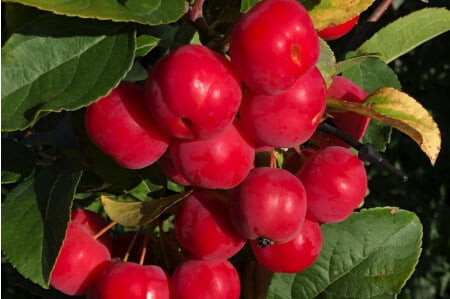
For example, an apple in group C will be able to pollinate another apple in group B, C and D. Avoid using varieties that are known to produce low quantities of pollen as this will result in poor pollination. If in doubt, plant a crabapple tree. They are excellent pollinators and will do an excellent job at attracting bees, birds and other wildlife.
Some plum trees require cross-pollination as they are not self-fertile. There are some exceptions such as damson and Stanley European plums that are self-pollinating and make for great pollinators to other European varieties. Japanese varieties that are self-pollinating are Santa Rosa and Methley. Mostly, European and Japanese varieties of plum trees have different bloom times, therefore you can’t cross-pollinate one with the other.
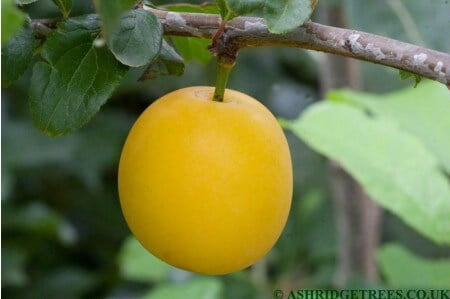
Cherry trees need the perfect partner for cross-pollination. Cherry pollination is based on blooming times and flowering groups. Cherry trees have been shown to exhibit incompatibility between varieties and even types that bloom at the same time may not be compatible. Sweet cherry trees need another sweet cherry variety to produce fruit. Whereas sour cherry trees do not require a second tree to produce fruit however a second variety would help to increase yields and bee activity.
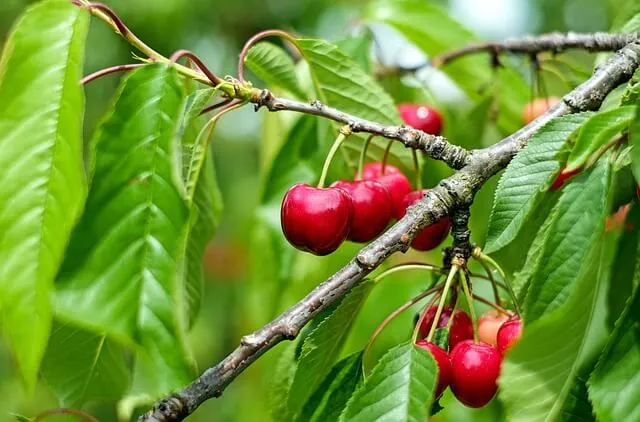
To produce fruit, pear trees need to be pollinated by another variety. Following a similar pattern to apples, pollination of pear trees is based on blooming time and flowering groups. While some pear varieties are considered self-fruitful, the addition of another tree of their kind greatly increases the chance of pollination. Pear flowers have minimal nectar as they are short lived. Cross-pollination of pear trees will help to result in regular crops and better fruit yield.
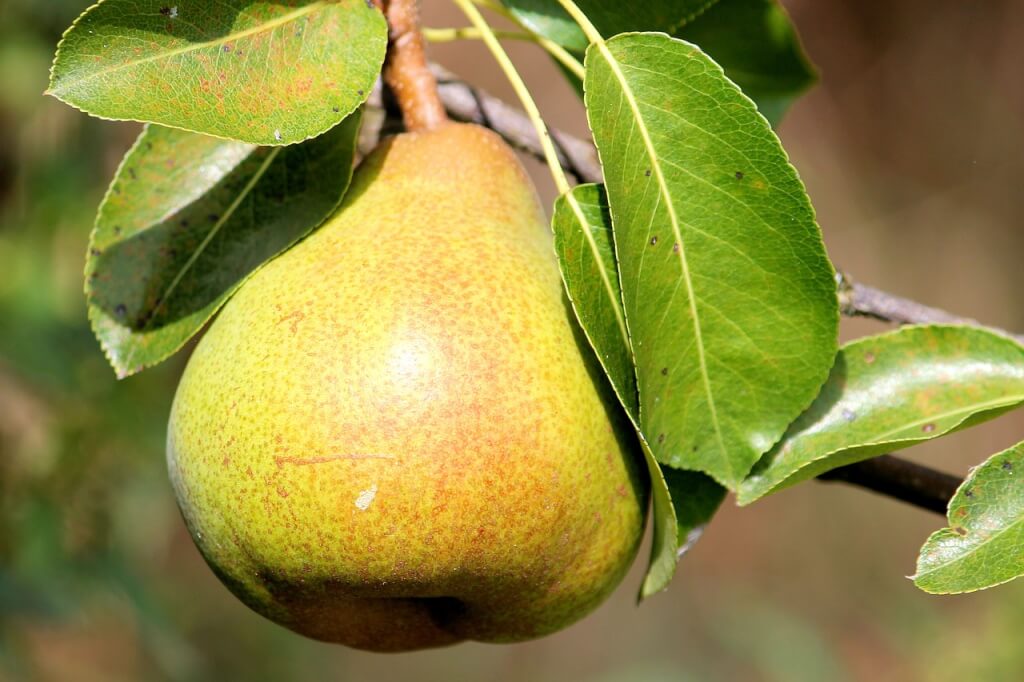
When planting fruit trees, it’s important to think about your whole garden landscape. You need bees to produce the best crop so gardening for the bees is vital. To increase bee activity for successful pollination, plant bee-friendly flowers that attract pollinators. Flowers such as viper’s bugloss, rosemary and forget-me-not will attract bees. As well as attracting bees, you’ll also attract other wildlife such as butterflies and birds. Another option is planting bergamot, which is available in pink and white. Particularly attractive to bees but will also attract butterflies and hummingbirds, the flowers smell great and blossom in the summer.
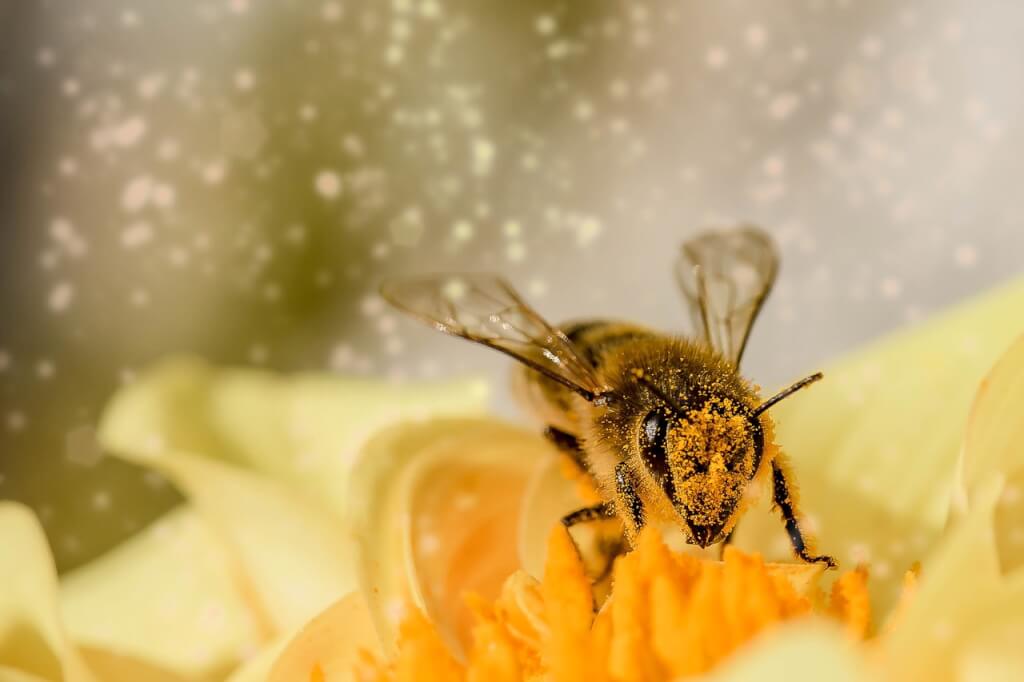
Bees are an essential part of not only producing great fruit but to gardening in general. Always think about the perfect pollination partner when planting fruit trees that require cross-pollination. Carry on gardening for the bees and see insect activity increase resulting in a higher chance of cross-pollination and crop size.
Julien de Bosdari is the owner of Ashridge Trees, a mail-order plant nursery founded in 1949. They provide a range of fruit and garden trees and deliver to England, Scotland, Wales and the Isle of Wight.
Why not Tweet, Facebook or Instagram me if you have your own fruit trees or are wondering what to plant next. Or you can check out my Youtube channel for garden design and planting inspiration. It would be great to hear from you.
Happy Gardening!



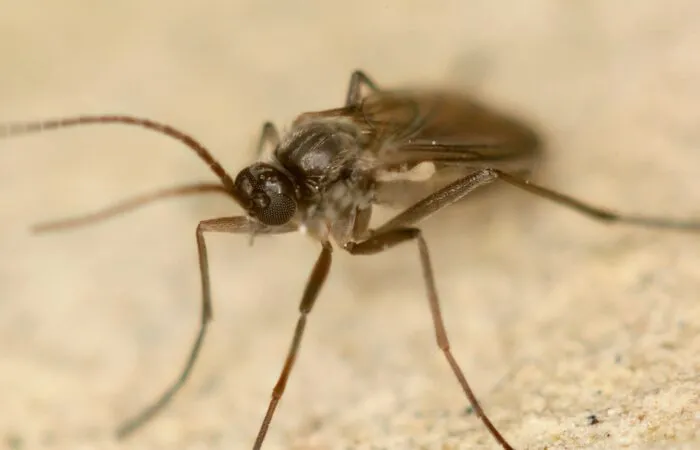
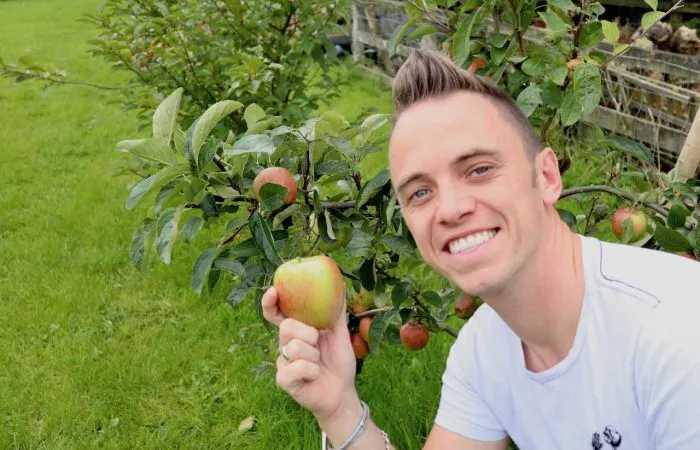
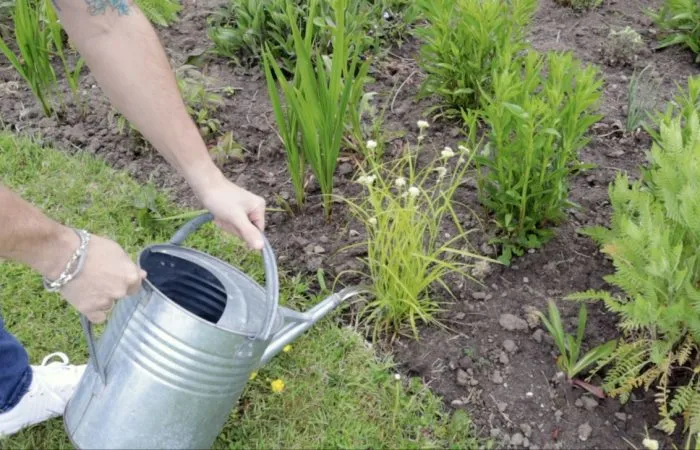
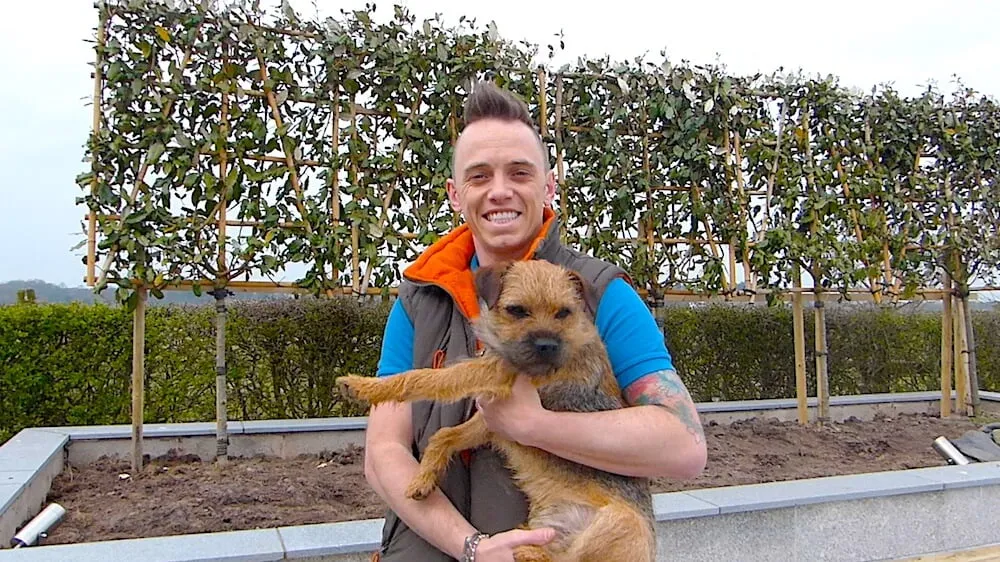
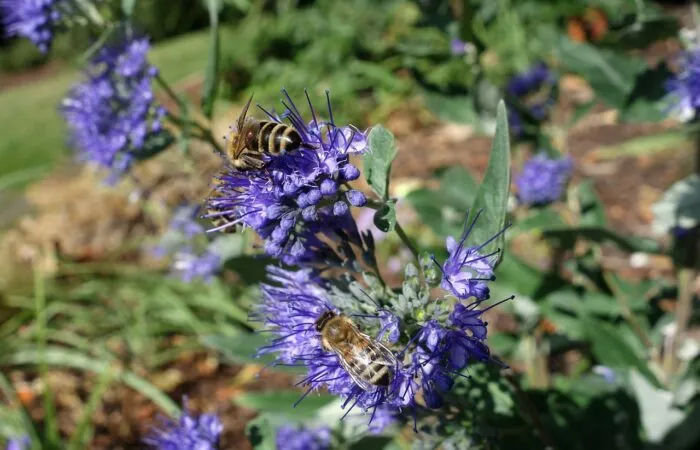
JOIN THE NINJAS

Be the first in line for new Guides, Discount codes and Offers